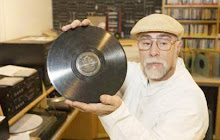On December 15, 2009, La Raza Chronicles' Vanessa Bohm interviews Jim Schultz of the Democracy Center
Listen to the program (live or podcast):
www.LaRazaChronicles.org
Attached below are recent articles by Jim Schultz and Jessica Aguirre published to the Democracy Center blog, with video, entitled: "A Visit to the Cemetery of Glaciers".
Dear Readers
This week in Copenhagen representatives from 192 nations have gathered to discuss the future of our small and imperiled planet.
The crisis of global climate change lingers over most of us in gauzy and unseen ways that make it easy to still ignore. Easy for us to still live in ways that turn up our planet’s temperature more each year. Easy for us to let our governments act as if tinkering and rhetoric is all that is needed. Easy for us to pretend that radical action is not needed now. Easy for us to still believe that a global environmental crisis is the stuff of Hollywood disaster movies and not current reality.
So now we welcome you to reality. We welcome you to the Andean highlands where the planet’s crisis is not tomorrow – it’s now.
Bolivia’s glaciers are melting. Vast mountaintops of ice older than the human race have disappeared and are disappearing. If you want a preview of what is happening to our planet don’t go to a multiplex, look to Mount Chacaltaya, look to Mount Illimani.
That’s what two members of the Democracy Center team did in late November. Anders Vang Nielsen (from Denmark) and Jessica Aguirre (from the U.S.) traveled to the melting slopes to talk with the people who live in the shadow of monumental environmental loss, video camera in hand.
The result is the short film above. Please take seven minutes and watch it. Please listen to what the people of these Andean slopes have to say. Please send a link to this page and video to your friends and family. Please take in the full measure of the disaster underway across our fragile planet. And then decide, as we all must, what you will do to take action now.
Jim Shultz
A Visit to the Cemetery of Glaciers
Written by Jessica Aguirre
When we arrived at the community of Khapi after a lurching three-hour truck ride along tortuously pitted dirt roads, it felt like stepping into a church. The central field of the village stretched out like a velvet carpet between a border of humble houses. The green vein that snaked down from Mount Illimani – a gash of verdant agriculture in the harsh rock mountainous landscape - culminated here before giving way again to dark crags that pointed to the sky and to the awesome Illimani that stood like some omnipresent sovereign or a stalagmite to god.
After a week of trudging up and down the vertical streets of La Paz, rushing from interview to presentation in the rain, the arrival to Khapi seemed incongruously calm. Set against the expansive panorama of the distant mountains, a small central building squatted at the edge of the village in front of which a community meeting was taking place as we roared up. The village men sat in a circle on meager wooden benches in from of the building, garmented in used American clothes and colorful hand-woven accessories. They seemed unimpressed by our arrival and continued speaking in low measured voices until they were ready to address our appearance, some forty minutes later.
We were introduced to Don Alivio, Don Max, and Don Severino: three community leaders who have had experience speaking to foreigners about climate change. Khapi has received a moderate amount of attention in international media as a terrifyingly stark example of the water shortages that could become common with global warming. The three men were patient in explaining to us the changes to their environmental, but their tone was urgent. They are anxious to see the results of their openness, of their advocacy.
Their anxiousness is not unfounded. Earlier in the week we had gone up to Chacaltaya to get some footage of a dead glacier. The trek was eerie: the mountain was frigidly cold and swirling clouds covered the landscape and whipped around our group. We rounded a point, and our guide tersely motioned toward a dip; “that’s where the glacier used to be,” he remarked. Looking out at jagged brown rock at the tiny dirty patches of snow (where three years ago skiers would have been speeding past), I felt like I was looking at a cemetery.
To be in the presence of landscape so staggering is to feel humbled in a holy way.
When Felix and Javier at CONOMAQ explained to us that the mountains were Achachillas, it didn’t require knowledge of Aymara to understand what they meant. Or to understand that climate change is about much more than physical survival.
[Note: If you would like to publish this video on your own Web site we gratefully encourage you to do so. You can find the YouTube post and embedding information here.]







